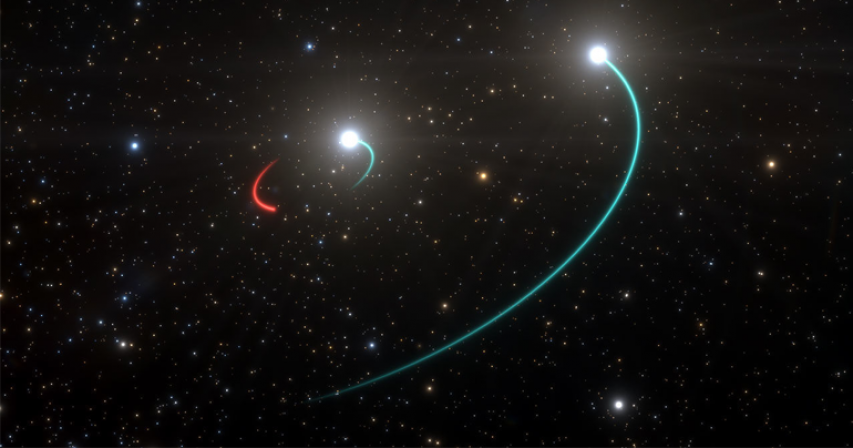Astronomers find closest black hole to Earth, hiding in plain sight
- 4 years ago

The Milky Way Galaxy is thought to contain hundreds of millions of black holes. But only a few dozen have revealed themselves—through the x-ray glow of hot gases that surround them. Now, astronomers have found a “dark” black hole only 1000 light-years away from Earth—just down the road in galactic terms. It is the closest black hole to our planet ever found, in a star system that is visible to the naked eye. “They have good evidence,” says Todd Thompson, an astronomer at Ohio State University, Columbus. “I believe them.”
The invisible nature of most black holes frustrates astronomers, who can learn about this final stage of stellar evolution only from the few dozen that have been found heating up an “accretion disk”—swirling gas they gobble up. Recently, however, astronomers have found several naked, nonaccreting candidates, using a technique borrowed from exoplanet searches. Exoplanet hunters look for periodic shifts in the frequency of the light from stars as it moves toward and away from Earth. This can be caused by the gravity of an invisible orbiting companion tugging on it. A small tug indicates a lightweight planet; a larger tug could be a sign of a black hole.
Thomas Rivinius, an astronomer with the European Southern Observatory (ESO), and his colleagues studied the unusual star system HR 6819 in this way using a 2.2-meter telescope in Chile, operated by ESO and the Max Planck Society. They thought it was a binary system, but there was an extra wobble in the periodic light shifts of one of the stars that indicated something else was asserting its presence. It turned out to be a triple system, with one star in a fast 40-day orbit with an unseen companion and another star on a more distant, slow-moving trajectory, they write today in Astronomy & Astrophysics. The invisible companion’s mass was large enough—four times the mass of the Sun—that, if it was a star, “we would have seen it,” Rivinius says.
To be sure the companion is a black hole, the researchers will take a closer look at the system. The team has applied for time to use ESO’s optical interferometer, a device that combines the light of separate telescopes to achieve the resolution of a much larger one. “We wouldn’t see the black hole,” Rivinius says, but they should see one of the stars “orbit something else that’s not there.”
The team was lucky to stumble across such a system, says astronomer Benjamin Giesers of the University of Göttingen. “You have to observe a lot of stars to find one.” He and his colleagues surveyed 25 globular clusters, hives of stars around the Milky Way that each contain hundreds of thousands of stars. In 2017, they found one black hole candidate, about 4.5 times the mass of the Sun, tugging on its companion star.
In 2019, Thompson and his colleagues also had a lucky strike, after trawling through data culled from the Sloan Digital Sky Survey and using the All-Sky Automated Survey for Supernovae to whittle down the numbers. “We were looking for a star doing something that it shouldn’t be doing,” he says. They finally found a rapidly rotating giant star called 2MASS J05215658+4359220, which, from its wobbles, indicated a black hole companion of about 3.5 solar masses. Studying systems such as this and HR 6819 will help astronomers “understand how binaries work and how black holes form,” Thompson says. The new find “is very close and bright,” he says. “It will be well studied.”
He adds a note of caution because some black hole candidates haven’t survived closer examination. “I don’t think anything is ironclad. You have to be skeptical.” But the fact that nonaccreting black holes are starting to show themselves in binary and triple systems suggests there must be many more isolated ones out there, some even closer than HR 6819.
BY Daniel Clery
Daniel is Science’s senior correspondent in the United Kingdom, covering astronomy, physics, and energy stories as well as European policy.
Comments